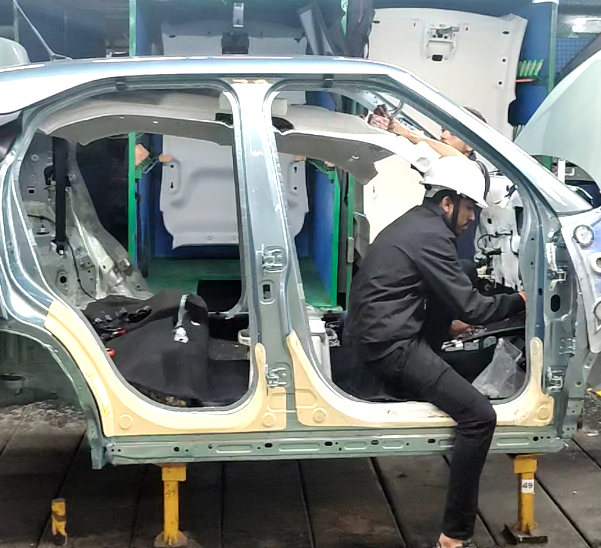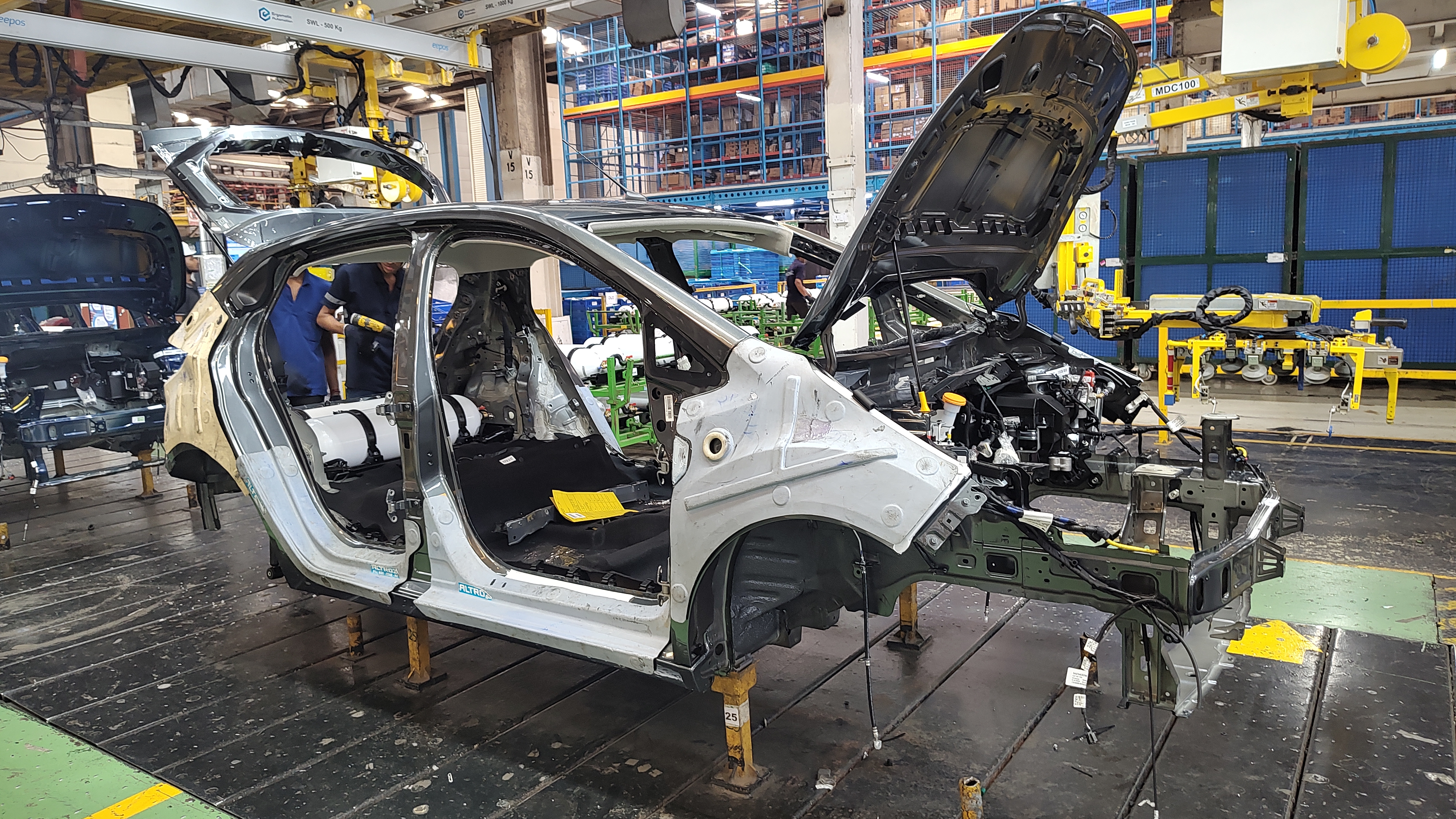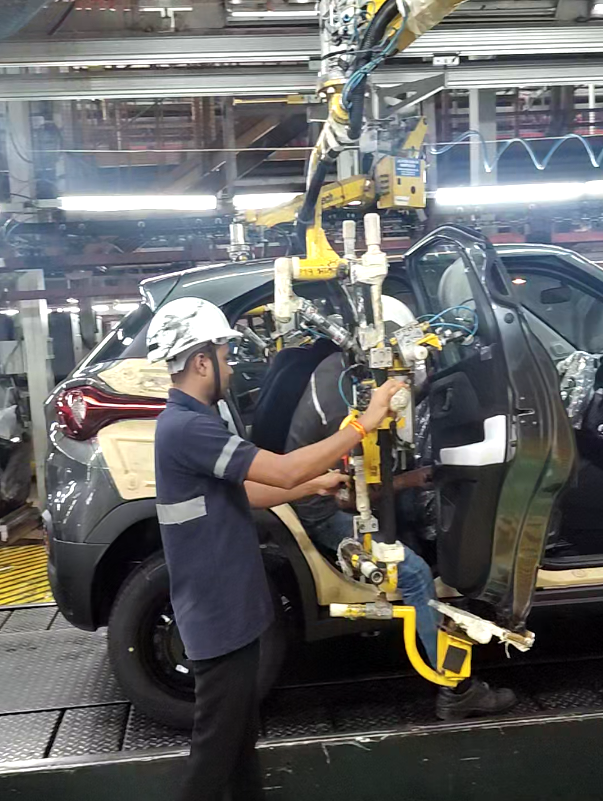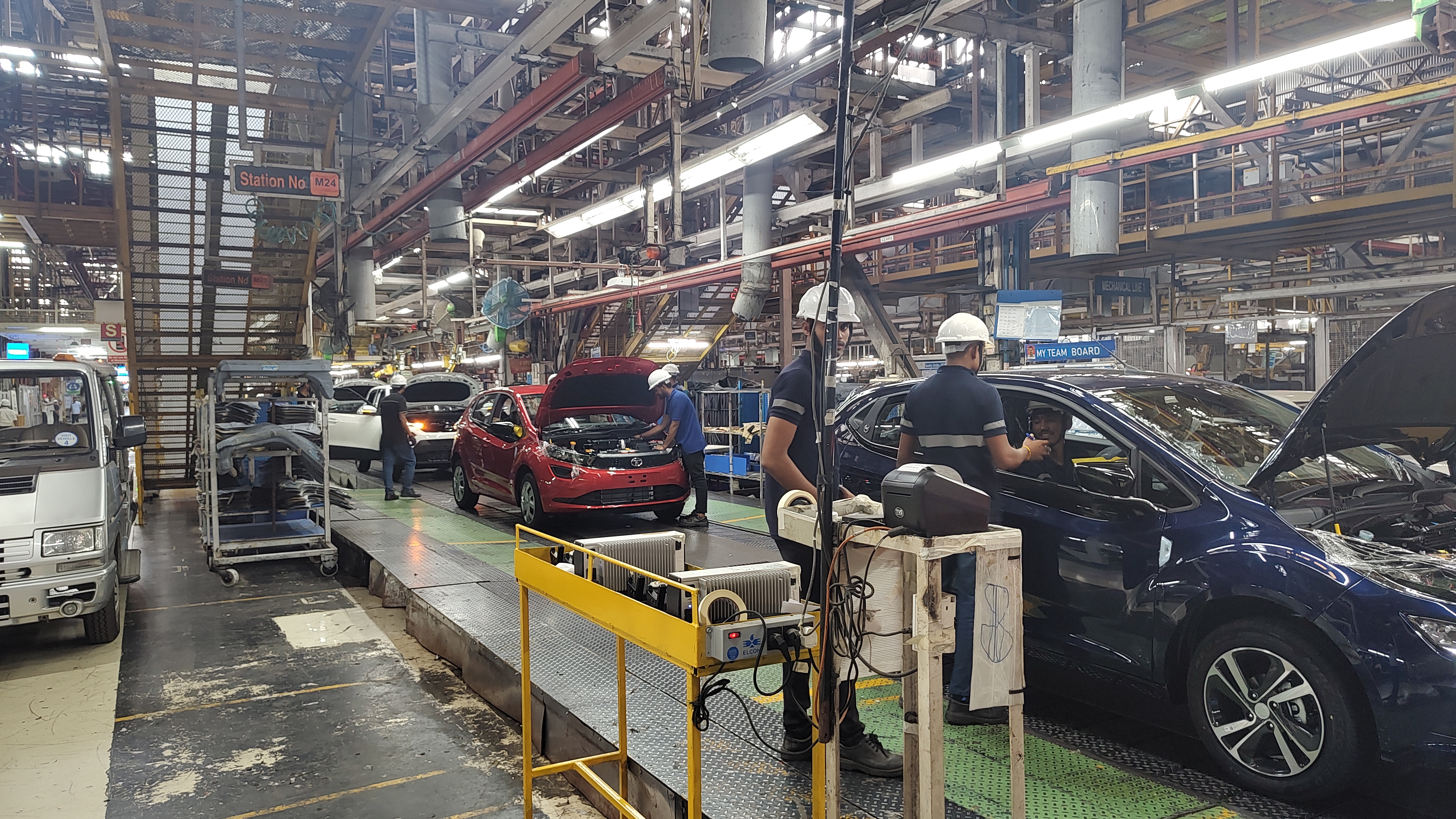Exploring how a car is assembled at Tata Motors’ Pune plant
Tata Motors invited us for an exclusive look inside its Pune plant where we got to see how the Altroz iCNG and Punch are assembled
 The TCF (Trim Chassis Final Assembly) line.
The TCF (Trim Chassis Final Assembly) line.In recent times, Tata Motors has become a name synonymous with innovation, quality, and reliability. It's no wonder that car enthusiasts and industry insiders alike are often eager to get a glimpse behind the curtain and see how these remarkable vehicles come to life. Recently, we had the privilege of stepping inside the Tata Motors plant in Pune, where we witnessed the assembly of two exciting models: the Altroz iCNG and the Punch. Read on as we delve into the heart of Tata Motors' manufacturing prowess.
The plant
Tata Motors introduced the Agile, Light, Flexible, and Advanced (ALFA) architecture in 2019 to enhance modularity, streamline product planning, and introduce new nameplates regularly. This modern manufacturing approach is based in Pune and encompasses press lines, Body-in-White (BIW), Paint, and Trim Chassis Finish (TCF) assembly shops. ALFA architecture is highly adaptable, accommodating various vehicle lengths and powertrain options, including petrol, diesel, and CNG, as well as different transmissions.
The ALFA architecture has played a crucial role in meeting high-volume demands for Tata Motors' prominent models, including the Altroz and Punch. It helped minimise disruptions during the introduction of twin-cylinder technology in the Altroz iCNG and Punch iCNG, freeing up boot space for consumers and reducing the 'time-to-market.'
The manufacturing setup is highly efficient, producing over 800 units per day. The whole process takes over 36 hours to be completed from start to end, and while we would have loved to take a deep look at everything, this time we only got to see the TCF assembly line where the final assembly takes place. It's at this point that the vehicles truly come to life. The line starts with the shell being brought in and all the parts are fitted into it. The final parts of this assembly line are also where they test the cars.
From a shell to a car
The journey begins with an empty car shell, a mere skeleton of what the vehicle will become. The first components to be added are the headliner and soundproofing materials. This step not only enhances the vehicle's aesthetics but also ensures a quiet and comfortable ride.
 A worker putting on the insulation material.
A worker putting on the insulation material.Wiring and interiors
Next in line are the intricate electrical equipment and wiring. It's fascinating to witness the precise installation of these critical components, all of which play a pivotal role in ensuring the car's functionality. These are followed by the interior components like the dashboard and the steering column.
Powering up
One of the most critical moments arrives when the two CNG tanks are carefully installed (if you’ve gone for the CNG model). These tanks have an innovative design which has largely removed the problem of not having boot space in a CNG car, while also providing an eco-friendly and efficient means of propulsion. Following this, the powertrain takes its place, with the transmission and engine installed simultaneously, followed by the front and rear axles.
 The dual CNG tanks.
The dual CNG tanks.Adding the finishing touches
Once the axles and engine go in, the car is put on its wheels for the first time. As we moved along the assembly line, we observed the car taking shape. Seats are placed inside, doors are attached, and the testing phase soon begins.
 A worker putting on the rear door of an Altroz iCNG.
A worker putting on the rear door of an Altroz iCNG.Ensuring quality
This is the final stage before the vehicle heads out for its crucial road test. Before a Tata vehicle hits the road, it goes through a series of rigorous tests to ensure that every component is functioning as intended. In the TCF line, engine and electrical equipment are subjected to thorough checks. The workers check for lights, dashboard warning signs and more. The engine is run for the first time at the same location. Following this is the dyno. Acceleration, speed, and braking tests are done, ensuring that the vehicle is good enough to be sent on the road.
An interesting step involves the car being sent through a shower booth, where it undergoes a test for leakages. This test ensures that the vehicle remains watertight even in the harshest conditions.
 Electrical and engine testing area.
Electrical and engine testing area.The test drive
The culmination of the assembly process is an in-house drive test. The car is topped up with CNG, and then it embarks on a 2km journey on the in-house test track which consists of varying terrains. This test drive evaluates the vehicle's performance under real-world conditions.
Our visit to the Tata Motors plant in Pune showcased the intricate processes and attention to detail that go into manufacturing passenger vehicles. It's here, in the TCF line, that the Altroz iCNG and the Punch, among others, transform from ideas into reality. Tata Motors' commitment to quality and innovation shines through at every step of the assembly process, ensuring that its vehicles are ready to meet the demands of the consumers.


